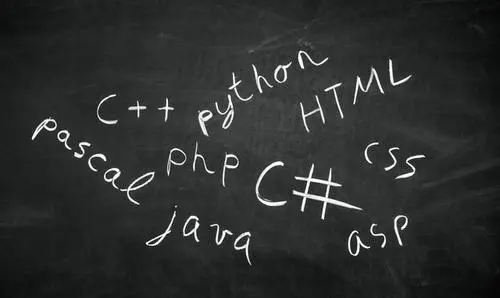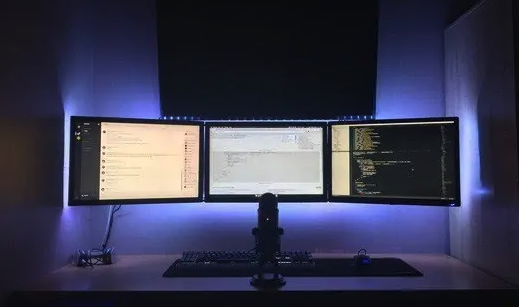题图来自Combining Classifiers
本篇主要介绍神经网络的集成(ensemble)。
其中有大段之前教程的文字及代码,如果看过的朋友可以快速翻到下文创建神经网络的集成(ensemble)部分。
01 – 简单线性模型/ 02 – 卷积神经网络/ 03 – PrettyTensor/ 04 – 保存 & 恢复
by Magnus Erik Hvass Pedersen / GitHub / Videos on YouTube
中文翻译 thrillerist/Github
如有转载,请附上本文链接。_______________________________________________________________________________________
这篇教程介绍了卷积神经网络的集成(ensemble)。我们使用多个神经网络,然后取它们输出的平均,而不是只用一个。
最终也是在MINIST数据集上识别手写数字。ensemble稍微地提升了测试集上的分类准确率,但差异很小,也可能是随机出现的。此外,ensemble误分类的一些图像在单独网络上却是正确分类的。
本文基于上一篇教程,你需要了解基本的TensorFlow和附加包Pretty Tensor。其中大量代码和文字与之前教程相似,如果你已经看过就可以快速地浏览本文。
下面的图表直接显示了之后实现的卷积神经网络中数据的传递。网络有两个卷积层和两个全连接层,最后一层是用来给输入图像分类的。关于网络和卷积的更多细节描述见教程 #02 。
本教程实现了5个这样的神经网络的集成,每个网络的结构相同但权重以及其他变量不同。
from IPython.display import Image
Image('images/02_network_flowchart.png')


%matplotlib inline
import matplotlib.pyplot as plt
import tensorflow as tf
import numpy as np
from sklearn.metrics import confusion_matrix
import time
from datetime import timedelta
import math
import os
# Use PrettyTensor to simplify Neural Network construction.
import prettytensor as pt
使用Python3.5.2(Anaconda)开发,TensorFlow版本是:
tf.__version__
‘0.12.0-rc0’
PrettyTensor 版本:
pt.__version__
‘0.7.1’
MNIST数据集大约12MB,如果没在给定路径中找到就会自动下载。
sorflow.examples.tutorials.mnist import input_data
data = input_data.read_data_sets('data/MNIST/', one_hot=True)
Extracting data/MNIST/train-images-idx3-ubyte.gz
Extracting data/MNIST/train-labels-idx1-ubyte.gz
Extracting data/MNIST/t10k-images-idx3-ubyte.gz
Extracting data/MNIST/t10k-labels-idx1-ubyte.gz
现在已经载入了MNIST数据集,它由70,000张图像和对应的标签(比如图像的类别)组成。数据集分成三份互相独立的子集,但后面我们会生成随机的训练集。
print("Size of:")
print("- Training-set:\t\t{}".format(len(data.train.labels)))
print("- Test-set:\t\t{}".format(len(data.test.labels)))
print("- Validation-set:\t{}".format(len(data.validation.labels)))
Size of:
– Training-set: 55000
– Test-set: 10000
– Validation-set: 5000
类型标签使用One-Hot编码,这意外每个标签是长为10的向量,除了一个元素之外,其他的都为零。这个元素的索引就是类别的数字,即相应图片中画的数字。我们也需要测试集和验证集的整形类别数字,在这里计算。
data.test.cls = np.argmax(data.test.labels, axis=1)
data.validation.cls = np.argmax(data.validation.labels, axis=1)
我们将会在随机选择的训练集上训练5个不同的神经网络。首先,将原始训练集和验证集合并到大的一个数组中。图像和标签都要进行此操作。
combined_images = np.concatenate([data.train.images, data.validation.images], axis=0)
combined_labels = np.concatenate([data.train.labels, data.validation.labels], axis=0)
检查合并后数组的大小是否正确。
print(combined_images.shape)
print(combined_labels.shape)
(60000, 784)
(60000, 10)
合并数据集的大小。
combined_size = len(combined_images)
combined_size
60000
定义每个神经网络使用的训练集的大小。你可以试着改变大小。
train_size = int(0.8 * combined_size)
train_size
48000
在训练时并没有使用验证集,但它的大小如下。
validation_size = combined_size - train_size
validation_size
12000
帮助函数将合并数组集划分成随机的训练集和验证集。
def random_training_set():
# Create a randomized index into the full / combined training-set.
idx = np.random.permutation(combined_size)
# Split the random index into training- and validation-sets.
idx_train = idx[0:train_size]
idx_validation = idx[train_size:]
# Select the images and labels for the new training-set.
x_train = combined_images[idx_train, :]
y_train = combined_labels[idx_train, :]
# Select the images and labels for the new validation-set.
x_validation = combined_images[idx_validation, :]
y_validation = combined_labels[idx_validation, :]
# Return the new training- and validation-sets.
return x_train, y_train, x_validation, y_validation
在下面的源码中,有很多地方用到了数据维度。它们只在一个地方定义,因此我们可以在代码中使用这些变量而不是直接写数字。
# We know that MNIST images are 28 pixels in each dimension.
img_size = 28
# Images are stored in one-dimensional arrays of this length.
img_size_flat = img_size * img_size
# Tuple with height and width of images used to reshape arrays.
img_shape = (img_size, img_size)
# Number of colour channels for the images: 1 channel for gray-scale.
num_channels = 1
# Number of classes, one class for each of 10 digits.
num_classes = 10
这个函数用来在3×3的栅格中画9张图像,然后在每张图像下面写出真实类别和预测类别。
def plot_images(images, # Images to plot, 2-d array.
cls_true, # True class-no for images.
ensemble_cls_pred=None, # Ensemble predicted class-no.
best_cls_pred=None): # Best-net predicted class-no.
assert len(images) == len(cls_true) # Create figure with 3x3 sub-plots.
fig, axes = plt.subplots(3, 3)
# Adjust vertical spacing if we need to print ensemble and best-net.
if ensemble_cls_pred is None:
hspace = 0.3
else:
hspace = 1.0
fig.subplots_adjust(hspace=hspace, wspace=0.3)
# For each of the sub-plots.
for i, ax in enumerate(axes.flat):
# There may not be enough images for all sub-plots.
if i < len(images):
# Plot image.
ax.imshow(images[i].reshape(img_shape), cmap='binary')
# Show true and predicted classes.
if ensemble_cls_pred is None:
xlabel = "True: {0}".format(cls_true[i])
else:
msg = "True: {0}\nEnsemble: {1}\nBest Net: {2}"
xlabel = msg.format(cls_true[i],
ensemble_cls_pred[i],
best_cls_pred[i])
# Show the classes as the label on the x-axis.
ax.set_xlabel(xlabel)
# Remove ticks from the plot.
ax.set_xticks([])
ax.set_yticks([]) # Ensure the plot is shown correctly with multiple plots
# in a single Notebook cell.
plt.show()
# Get the first images from the test-set.
images = data.test.images[0:9]
# Get the true classes for those images.
cls_true = data.test.cls[0:9]
# Plot the images and labels using our helper-function above.
plot_images(images=images, cls_true=cls_true)

TensorFlow的全部目的就是使用一个称之为计算图(computational graph)的东西,它会比直接在Python中进行相同计算量要高效得多。TensorFlow比Numpy更高效,因为TensorFlow了解整个需要运行的计算图,然而Numpy只知道某个时间点上唯一的数学运算。
TensorFlow也能够自动地计算需要优化的变量的梯度,使得模型有更好的表现。这是由于图是简单数学表达式的结合,因此整个图的梯度可以用链式法则推导出来。
TensorFlow还能利用多核CPU和GPU,Google也为TensorFlow制造了称为TPUs(Tensor Processing Units)的特殊芯片,它比GPU更快。
A TensorFlow graph consists of the following parts which will be detailed below:
另外,TensorFlow图也包含了一些调试状态,比如用TensorBoard打印log数据,本教程不涉及这些。
Placeholder是作为图的输入,我们每次运行图的时候都可能改变它们。将这个过程称为feeding placeholder变量,后面将会描述这个。
首先我们为输入图像定义placeholder变量。这让我们可以改变输入到TensorFlow图中的图像。这也是一个张量(tensor),代表一个多维向量或矩阵。数据类型设置为float32,形状设为[None, img_size_flat],None代表tensor可能保存着任意数量的图像,每张图象是一个长度为img_size_flat的向量。
x = tf.placeholder(tf.float32, shape=[None, img_size_flat], name='x')
卷积层希望x被编码为4维张量,因此我们需要将它的形状转换至[num_images, img_height, img_width, num_channels]。注意img_height == img_width == img_size,如果第一维的大小设为-1, num_images的大小也会被自动推导出来。转换运算如下:
x_image = tf.reshape(x, [-1, img_size, img_size, num_channels])
接下来我们为输入变量x中的图像所对应的真实标签定义placeholder变量。变量的形状是[None, num_classes],这代表着它保存了任意数量的标签,每个标签是长度为num_classes的向量,本例中长度为10。
y_true = tf.placeholder(tf.float32, shape=[None, 10], name='y_true')
我们也可以为class-number提供一个placeholder,但这里用argmax来计算它。这里只是TensorFlow中的一些操作,没有执行什么运算。
y_true_cls = tf.argmax(y_true, dimension=1)
这一节用PrettyTensor实现卷积神经网络,这要比直接在TensorFlow中实现来得简单,详见教程 #03。
基本思想就是用一个Pretty Tensor object封装输入张量x_image,它有一个添加新卷积层的帮助函数,以此来创建整个神经网络。Pretty Tensor负责变量分配等等。
x_pretty = pt.wrap(x_image)
现在我们已经将输入图像装到一个PrettyTensor的object中,再用几行代码就可以添加卷积层和全连接层。
注意,在with代码块中,pt.defaults_scope(activation_fn=tf.nn.relu) 把 activation_fn=tf.nn.relu当作每个的层参数,因此这些层都用到了 Rectified Linear Units (ReLU) 。defaults_scope使我们能更方便地修改所有层的参数。
with pt.defaults_scope(activation_fn=tf.nn.relu):
y_pred, loss = x_pretty.\
conv2d(kernel=5, depth=16, name='layer_conv1').\
max_pool(kernel=2, stride=2).\
conv2d(kernel=5, depth=36, name='layer_conv2').\
max_pool(kernel=2, stride=2).\
flatten().\
fully_connected(size=128, name='layer_fc1').\
softmax_classifier(num_classes=num_classes, labels=y_true)
PrettyTensor给我们提供了预测类型标签(y_pred)以及一个需要最小化的损失度量,用来提升神经网络分类图片的能力。
PrettyTensor的文档并没有说明它的损失度量是用cross-entropy还是其他的。但现在我们用AdamOptimizer来最小化损失。
优化过程并不是在这里执行。实际上,还没计算任何东西,我们只是往TensorFlow图中添加了优化器,以便后续操作。
optimizer = tf.train.AdamOptimizer(learning_rate=1e-4).minimize(loss)
我们需要另外一些性能度量,来向用户展示这个过程。
首先我们从神经网络输出的y_pred中计算出预测的类别,它是一个包含10个元素的向量。类别数字是最大元素的索引。
y_pred_cls = tf.argmax(y_pred, dimension=1)
然后创建一个布尔向量,用来告诉我们每张图片的真实类别是否与预测类别相同。
correct_prediction = tf.equal(y_pred_cls, y_true_cls)
上面的计算先将布尔值向量类型转换成浮点型向量,这样子False就变成0,True变成1,然后计算这些值的平均数,以此来计算分类的准确度。
accuracy = tf.reduce_mean(tf.cast(correct_prediction, tf.float32))
为了保存神经网络的变量,我们创建一个称为Saver-object的对象,它用来保存及恢复TensorFlow图的所有变量。在这里并未保存什么东西,(保存操作)在后面的optimize()函数中完成。
注意,如果在ensemble中有超过100个的神经网络,你需要根据情况来增加max_to_keep。
saver = tf.train.Saver(max_to_keep=100)
这是用来保存或恢复数据的文件夹。
save_dir = 'checkpoints/'
如果文件夹不存在则创建。
if not os.path.exists(save_dir):
os.makedirs(save_dir)
这个函数根据输入的网络编号返回数据文件的保存路径。
def get_save_path(net_number):
return save_dir + 'network' + str(net_number)
一旦创建了TensorFlow图,我们需要创建一个TensorFlow会话,用来运行图。
session = tf.Session()
变量weights和biases在优化之前需要先进行初始化。我们写一个简单的封装函数,后面会再次调用。
def init_variables():
session.run(tf.initialize_all_variables())
在训练集中有上千张图。用这些图像计算模型的梯度会花很多时间。因此,它在优化器的每次迭代里只用到了一小部分的图像。
如果内存耗尽导致电脑死机或变得很慢,你应该试着减少这些数量,但同时可能还需要更优化的迭代。
train_batch_size = 64
函数根据给定的大小挑选一个随机的training-batch。
def random_batch(x_train, y_train):
# Total number of images in the training-set.
num_images = len(x_train)
# Create a random index into the training-set.
idx = np.random.choice(num_images,
size=train_batch_size,
replace=False)
# Use the random index to select random images and labels.
x_batch = x_train[idx, :] # Images.
y_batch = y_train[idx, :] # Labels.
# Return the batch.
return x_batch, y_batch
函数用来执行一定数量的优化迭代,以此来逐渐改善网络层的变量。在每次迭代中,会从训练集中选择新的一批数据,然后TensorFlow在这些训练样本上执行优化。每100次迭代会打印出(信息)。
def optimize(num_iterations, x_train, y_train):
# Start-time used for printing time-usage below.
start_time = time.time()
for i in range(num_iterations):
# Get a batch of training examples.
# x_batch now holds a batch of images and
# y_true_batch are the true labels for those images.
x_batch, y_true_batch = random_batch(x_train, y_train)
# Put the batch into a dict with the proper names
# for placeholder variables in the TensorFlow graph.
feed_dict_train = {x: x_batch,
y_true: y_true_batch}
# Run the optimizer using this batch of training data.
# TensorFlow assigns the variables in feed_dict_train
# to the placeholder variables and then runs the optimizer.
session.run(optimizer, feed_dict=feed_dict_train)
# Print status every 100 iterations and after last iteration.
if i % 100 == 0:
# Calculate the accuracy on the training-batch.
acc = session.run(accuracy, feed_dict=feed_dict_train)
# Status-message for printing.
msg = "Optimization Iteration: {0:>6}, Training Batch Accuracy: {1:>6.1%}"
# Print it.
print(msg.format(i + 1, acc))
# Ending time.
end_time = time.time()
# Difference between start and end-times.
time_dif = end_time - start_time
# Print the time-usage.
print("Time usage: " + str(timedelta(seconds=int(round(time_dif)))))
神经网络ensemble的数量
num_networks = 5
每个神经网络优化迭代的次数。
num_iterations = 10000
创建神经网络的ensemble。所有网络都使用上面定义的那个TensorFlow图。每个网络的TensorFlow权重和变量都用随机值初始化,然后进行优化。接着将变量保存到磁盘中以便之后重载使用。
如果你只是想重新运行Notebook来对结果进行不同的分析,可以跳过这一步。
if True:
# For each of the neural networks.
for i in range(num_networks):
print("Neural network: {0}".format(i))
# Create a random training-set. Ignore the validation-set.
x_train, y_train, _, _ = random_training_set()
# Initialize the variables of the TensorFlow graph.
session.run(tf.global_variables_initializer())
# Optimize the variables using this training-set.
optimize(num_iterations=num_iterations,
x_train=x_train,
y_train=y_train)
# Save the optimized variables to disk.
saver.save(sess=session, save_path=get_save_path(i))
# Print newline.
print()
Neural network: 0
Optimization Iteration: 1, Training Batch Accuracy: 6.2%&#8230;
Optimization Iteration: 9901, Training Batch Accuracy: 100.0%
Time usage: 0:00:40
Neural network: 1
Optimization Iteration: 1, Training Batch Accuracy: 7.8%
&#8230;
Optimization Iteration: 9901, Training Batch Accuracy: 98.4%
Time usage: 0:00:40
Neural network: 2
Optimization Iteration: 1, Training Batch Accuracy: 3.1%
&#8230;
Optimization Iteration: 9901, Training Batch Accuracy: 100.0%
Time usage: 0:00:39
Neural network: 3
Optimization Iteration: 1, Training Batch Accuracy: 9.4%
&#8230;
Optimization Iteration: 9901, Training Batch Accuracy: 100.0%
Time usage: 0:00:39
Neural network: 4
Optimization Iteration: 1, Training Batch Accuracy: 9.4%
&#8230;
Optimization Iteration: 9901, Training Batch Accuracy: 98.4%
Time usage: 0:00:39
这个函数计算了图像的预测标签,对每张图像来说,函数计算了一个长度为10的向量,向量显示了图像的类别。
计算分批完成,否则将占用太多内存。如果电脑死机了,你需要降低batch-size。
# Split the data-set in batches of this size to limit RAM usage.
batch_size = 256
def predict_labels(images):
# Number of images.
num_images = len(images)
# Allocate an array for the predicted labels which
# will be calculated in batches and filled into this array.
pred_labels = np.zeros(shape=(num_images, num_classes),
dtype=np.float)
# Now calculate the predicted labels for the batches.
# We will just iterate through all the batches.
# There might be a more clever and Pythonic way of doing this.
# The starting index for the next batch is denoted i.
i = 0
while i < num_images:
# The ending index for the next batch is denoted j.
j = min(i + batch_size, num_images)
# Create a feed-dict with the images between index i and j.
feed_dict = {x: images[i:j, :]}
# Calculate the predicted labels using TensorFlow.
pred_labels[i:j] = session.run(y_pred, feed_dict=feed_dict)
# Set the start-index for the next batch to the
# end-index of the current batch.
i = j
return pred_labels
计算一个布尔值向量,代表图像的预测类型是否正确。
def correct_prediction(images, labels, cls_true):
# Calculate the predicted labels.
pred_labels = predict_labels(images=images)
# Calculate the predicted class-number for each image.
cls_pred = np.argmax(pred_labels, axis=1)
# Create a boolean array whether each image is correctly classified.
correct = (cls_true == cls_pred)
return correct
计算一个布尔数组,代表测试集中图像是否分类正确。
def test_correct():
return correct_prediction(images = data.test.images,
labels = data.test.labels,
cls_true = data.test.cls)
计算一个布尔数组,代表验证集中图像是否分类正确。
def validation_correct():
return correct_prediction(images = data.validation.images,
labels = data.validation.labels,
cls_true = data.validation.cls)
这个函数计算了给定布尔数组的分类准确率,布尔数组表示每张图像是否被正确分类。比如, cls_accuracy([True, True, False, False, False]) = 2/5 = 0.4。
def classification_accuracy(correct):
# When averaging a boolean array, False means 0 and True means 1.
# So we are calculating: number of True / len(correct) which is
# the same as the classification accuracy.
return correct.mean()
计算测试集的分类准确率。
def test_accuracy():
# Get the array of booleans whether the classifications are correct
# for the test-set.
correct = test_correct() # Calculate the classification accuracy and return it.
return classification_accuracy(correct)
计算原始验证集上的分类准确率。
def validation_accuracy():
# Get the array of booleans whether the classifications are correct
# for the validation-set.
correct = validation_correct() # Calculate the classification accuracy and return it.
return classification_accuracy(correct)
函数用来为ensemble中的所有神经网络计算预测标签。后面会将这些标签合并起来。
def ensemble_predictions():
# Empty list of predicted labels for each of the neural networks.
pred_labels = []
# Classification accuracy on the test-set for each network.
test_accuracies = []
# Classification accuracy on the validation-set for each network.
val_accuracies = []
# For each neural network in the ensemble.
for i in range(num_networks):
# Reload the variables into the TensorFlow graph.
saver.restore(sess=session, save_path=get_save_path(i))
# Calculate the classification accuracy on the test-set.
test_acc = test_accuracy()
# Append the classification accuracy to the list.
test_accuracies.append(test_acc)
# Calculate the classification accuracy on the validation-set.
val_acc = validation_accuracy()
# Append the classification accuracy to the list.
val_accuracies.append(val_acc)
# Print status message.
msg = "Network: {0}, Accuracy on Validation-Set: {1:.4f}, Test-Set: {2:.4f}"
print(msg.format(i, val_acc, test_acc))
# Calculate the predicted labels for the images in the test-set.
# This is already calculated in test_accuracy() above but
# it is re-calculated here to keep the code a bit simpler.
pred = predict_labels(images=data.test.images)
# Append the predicted labels to the list.
pred_labels.append(pred) return np.array(pred_labels), \
np.array(test_accuracies), \
np.array(val_accuracies)
pred_labels, test_accuracies, val_accuracies = ensemble_predictions()
Network: 0, Accuracy on Validation-Set: 0.9948, Test-Set: 0.9893
Network: 1, Accuracy on Validation-Set: 0.9936, Test-Set: 0.9880
Network: 2, Accuracy on Validation-Set: 0.9958, Test-Set: 0.9893
Network: 3, Accuracy on Validation-Set: 0.9938, Test-Set: 0.9889
Network: 4, Accuracy on Validation-Set: 0.9938, Test-Set: 0.9892
总结ensemble中的神经网络在测试集上的分类准确率。
print("Mean test-set accuracy: {0:.4f}".format(np.mean(test_accuracies)))
print("Min test-set accuracy: {0:.4f}".format(np.min(test_accuracies)))
print("Max test-set accuracy: {0:.4f}".format(np.max(test_accuracies)))
Mean test-set accuracy: 0.9889
Min test-set accuracy: 0.9880
Max test-set accuracy: 0.9893
ensemble的预测标签是3维的数组,第一维是神经网络数量,第二维是图像数量,第三维是分类向量。
pred_labels.shape
(5, 10000, 10)
有几种不同的方法来计算ensemble的预测标签。一种是计算每个神经网络的预测类别数字,然后选择得票最多的那个类别。但根据分类的类别数量,这种方法需要大量的神经网络。
这里用的方法是取ensemble中所有预测标签的平均。这个计算很简单,而且集成种不需要大量的神经网络。
ensemble_pred_labels = np.mean(pred_labels, axis=0)
ensemble_pred_labels.shape
(10000, 10)
取标签中最大数字的索引作为ensemble的预测类别数字,这通常用argmax来计算。
ensemble_cls_pred = np.argmax(ensemble_pred_labels, axis=1)
ensemble_cls_pred.shape
(10000,)
布尔数组表示测试集中的图像是否被神经网络的ensemble正确分类。
ensemble_correct = (ensemble_cls_pred == data.test.cls)
对布尔数组取反,因此我们可以用它来查找误分类的图像。
ensemble_incorrect = np.logical_not(ensemble_correct)
现在我们找出在测试集上表现最佳的单个神经网络。
首先列出ensemble中所有神经网络在测试集上的分类准确率。
test_accuracies
array([ 0.9893, 0.988 , 0.9893, 0.9889, 0.9892])
准确率最高的神经网络索引。
best_net = np.argmax(test_accuracies)
best_net
0
最佳神经网络在测试集上的分类准确率。
test_accuracies[best_net]
0.98929999999999996
最佳神经网络的预测标签。
best_net_pred_labels = pred_labels[best_net, :, :]
预测的类别数字。
best_net_cls_pred = np.argmax(best_net_pred_labels, axis=1)
最佳神经网络在测试集上是否正确分类图像的布尔数组。
best_net_correct = (best_net_cls_pred == data.test.cls)
图像是否被误分类的布尔数组。
best_net_incorrect = np.logical_not(best_net_correct)
测试集中被ensemble正确分类的图像数量。
np.sum(ensemble_correct)
9916
测试集中被最佳网络正确分类的图像数量。
np.sum(best_net_correct)
9893
布尔数组表示测试集中每张图像是否“被ensemble正确分类且被最佳网络误分类”。
ensemble_better = np.logical_and(best_net_incorrect,
ensemble_correct)
测试集上ensemble比最佳网络表现更好的图像数量:
ensemble_better.sum()
39
布尔数组表示测试集中每张图像是否“被最佳网络正确分类且被ensemble误分类”。
best_net_better = np.logical_and(best_net_correct,
ensemble_incorrect)
测试集上最佳网络比ensemble表现更好的图像数量:
best_net_better.sum()
16
函数用来绘制测试集中的图像,以及它们的真实类别与预测类别。
def plot_images_comparison(idx):
plot_images(images=data.test.images[idx, :],
cls_true=data.test.cls[idx],
ensemble_cls_pred=ensemble_cls_pred[idx],
best_cls_pred=best_net_cls_pred[idx])
打印预测标签的函数。
def print_labels(labels, idx, num=1):
# Select the relevant labels based on idx.
labels = labels[idx, :]
# Select the first num labels.
labels = labels[0:num, :] # Round numbers to 2 decimal points so they are easier to read.
labels_rounded = np.round(labels, 2)
# Print the rounded labels.
print(labels_rounded)
打印神经网络ensemble预测标签的函数。
def print_labels_ensemble(idx, **kwargs):
print_labels(labels=ensemble_pred_labels, idx=idx, **kwargs)
打印单个网络预测标签的函数。
def print_labels_best_net(idx, **kwargs):
print_labels(labels=best_net_pred_labels, idx=idx, **kwargs)
打印ensemble中所有神经网络预测标签的函数。只打印第一张图像的标签。
def print_labels_all_nets(idx):
for i in range(num_networks):
print_labels(labels=pred_labels[i, :, :], idx=idx, num=1)
绘制出那些被集成网络正确分类,且被最佳网络误分类的样本。
plot_images_comparison(idx=ensemble_better)

ensemble对第一张图像(左上)的预测标签:
print_labels_ensemble(idx=ensemble_better, num=1)
[[ 0. 0. 0. 0.76 0. 0. 0. 0. 0.23 0. ]]
最佳网络对第一张图像的预测标签:
print_labels_best_net(idx=ensemble_better, num=1)
[[ 0. 0. 0. 0.21 0. 0. 0. 0. 0.79 0. ]]
ensemble中所有网络对第一张图像的预测标签:
print_labels_all_nets(idx=ensemble_better)
[[ 0. 0. 0. 0.21 0. 0. 0. 0. 0.79 0. ]]
[[ 0. 0. 0. 0.96 0. 0.01 0. 0. 0.03 0. ]]
[[ 0. 0. 0. 0.99 0. 0. 0. 0. 0.01 0. ]]
[[ 0. 0. 0. 0.88 0. 0. 0. 0. 0.12 0. ]]
[[ 0. 0. 0. 0.76 0. 0.01 0. 0. 0.22 0. ]]
现在绘制那些被ensemble误分类,但被最佳网络正确分类的样本。
plot_images_comparison(idx=best_net_better)

ensemble对第一张图像(左上)的预测标签:
print_labels_ensemble(idx=best_net_better, num=1)
[[ 0.5 0. 0. 0. 0. 0.05 0.45 0. 0. 0. ]]
最佳网络对第一张图像的预测标签:
print_labels_best_net(idx=best_net_better, num=1)
[[ 0.3 0. 0. 0. 0. 0.15 0.56 0. 0. 0. ]]
ensemble中所有网络对第一张图像的预测标签:
print_labels_all_nets(idx=best_net_better)
[[ 0.3 0. 0. 0. 0. 0.15 0.56 0. 0. 0. ]]
[[ 1. 0. 0. 0. 0. 0. 0. 0. 0. 0.]]
[[ 0.19 0. 0. 0. 0. 0. 0.81 0. 0. 0. ]]
[[ 0.15 0. 0. 0. 0. 0.12 0.72 0. 0. 0. ]]
[[ 0.85 0. 0. 0. 0. 0. 0.14 0. 0. 0. ]]
现在我们已经用TensorFlow完成了任务,关闭session,释放资源。
# This has been commented out in case you want to modify and experiment
# with the Notebook without having to restart it.
# session.close()
这篇教程创建了5个神经网络的集成(ensemble),用来识别MINIST数据集中的手写数字。ensemble取5个单独神经网络的平均值。最终稍微提高了在测试集上的分类准确率,相比单个最佳网络98.9%的准确率,ensemble是99.1%。
然而,ensemble的表现并不是一直都比单个网络好,有些单个网络正确分类的图像却被ensemble误分类。这表明神经网络ensemble的作用有点随机,可能无法提供一个提升性能的可靠方式(和单独神经网络性能相比)。
这里使用的集成学习的形式叫bagging (或 Bootstrap Aggregating),它常用来避免过拟合,但对(本文中的)这个特定的神经网络和数据集来说不是必要的。在其他情况下集成学习可能仍然有效。
本文在实现集成学习时用了TensorFlow中Saver()对象来保存和恢复神经网络中的变量。但这个功能其实是为其他目的设计的,使用在有多种类型神经网络的集成学习中,或者想同时载入多个神经网络时就有点笨拙了。有一个叫 sk-flow 的TensorFlow添加包有更简单的方法,但到2016年八月为止,它仍然处于开发的前期阶段。
下面是一些可能会让你提升TensorFlow技能的一些建议练习。为了学习如何更合适地使用TensorFlow,实践经验是很重要的。
在你对这个Nootbook进行改变之前,可能需要先备份一下。

 京公网安备 11010802041100号 | 京ICP备19059560号-4 | PHP1.CN 第一PHP社区 版权所有
京公网安备 11010802041100号 | 京ICP备19059560号-4 | PHP1.CN 第一PHP社区 版权所有